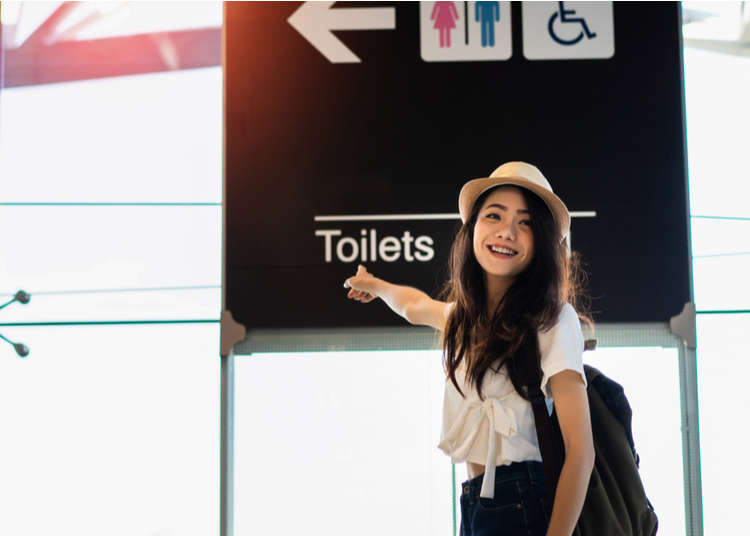
"Auto-What?!" 16 Weird Things That Shocked Foreigners About Japanese Bathrooms
- Written by: Sohail Oz Ali
Many foreigners who visit Japan are confused, intrigued and sometimes baffled by Japanese culture and some of the aspects of life that are unique to Japan. Whether it be the amount of anime, manga and cosplay displayed in Akihabara, the unique and traditional Japanese cuisine and themed restaurants or all of the bowing that takes place amongst Japanese people, Japan has an atmosphere unlike any other country.
So it is no surprise that even Japan’s bathrooms are one of a kind sites that sometimes amaze and perplex visitors. We asked some foreigners living in or visiting Japan what confused, impressed and astonished them about Japanese bathrooms.
1. Automatic Doors
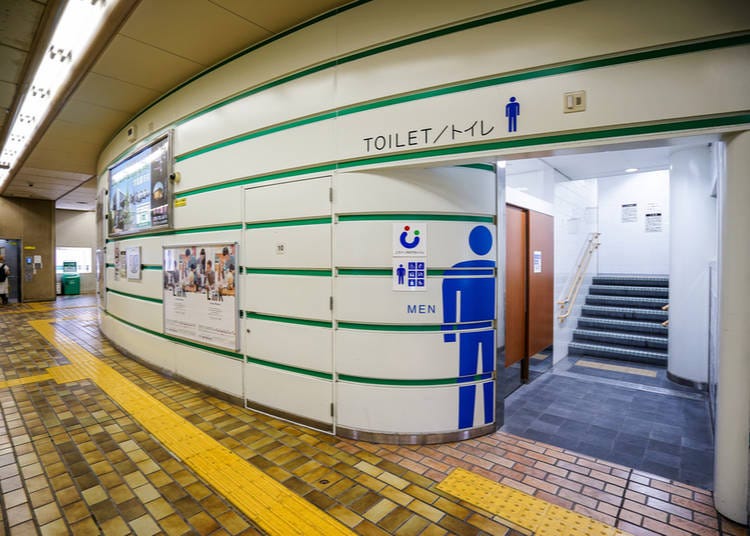
If you are a germaphobe than you are going to love handling your business in a modern Japanese bathroom. Many of the newest and high-tech bathrooms have many features that allow people to enter and exit the bathroom without having touched anything (at least with their hands).
Many newer public bathrooms don’t have a swinging door that you must push to enter. Instead, most newer bathrooms have a long corridor that leads to the sectioned off bathroom or have automatic sliding doors like you would find at a supermarket. This allows people to enter and exit the bathroom without pushing or pulling open doors.
2. Automatic Seats
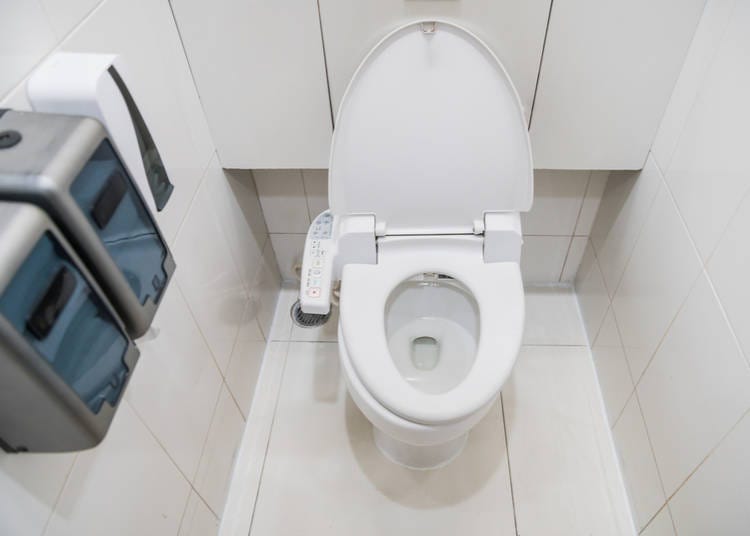
Many new toilets have sensors on the toilet which raise and lower when someone approaches. Not having to lift or lower the toilet seat is not only great for avoiding the spread of germs but also convenient for those who forget to lower the toilet seat when leaving.
Ryan, 33, a businessman from Chicago, was shocked when he first witnessed the seat rising. “I was at my hotel and I just entered my bathroom to put my toiletries away when suddenly the seat made a buzzing noise and started rising. It freaked me out because I wasn’t expecting it. But now I like it. I feel like I am in a sci-fi movie,” he said.
3. Auto-flush
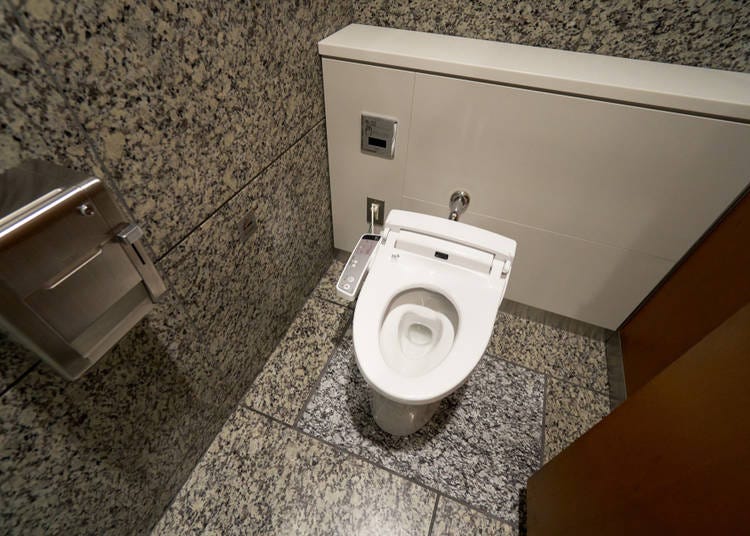
When you are finished using the toilet and stand up, a sensor triggers an automatic flush function. Often people forget to flush so this takes care of that problem. Michelle, 28, from Toronto admitted, “I dread opening stalls in Canada to find floaters in the toilet. But in Japan, whenever I went into a stall it would start flushing automatically and then flush again when I left!”
As the flush lever or button is most-likely the dirtiest surface you are likely to touch in a bathroom because no one has washed their hands until after leaving the stall, automatic flushing makes sense. Instead of a lever, having a sensor allows you to flush the toilet without contaminating your hands.
4. Hand Washing and Drying

Modern bathrooms also come with a sink that has both water and soap dispensers that react to sensors. There is no need to touch a tap or push a soap lever to properly wash your hands.
Something curious, however, is that many public bathrooms in Japan lack a hand dryer or towels. You’ll want to bring a handkerchief or hand towel with you just in case, so you’re not drying yourself on your shirt!
5. Surprisingly Clean
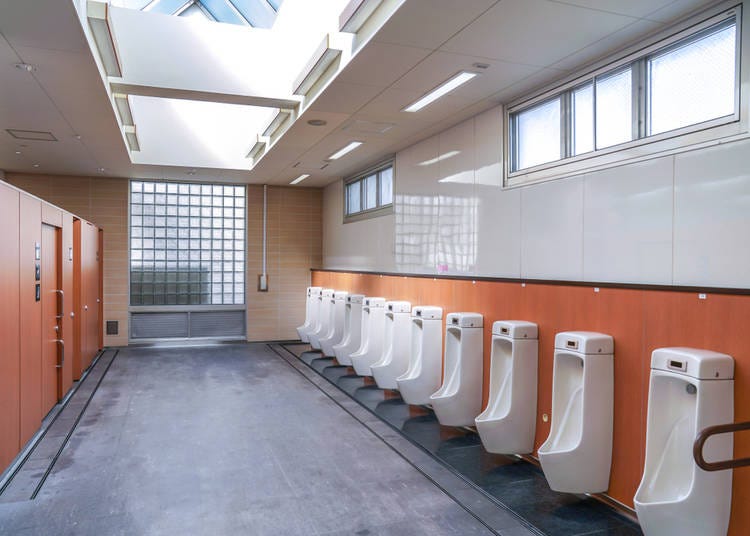
“Having lived here for 3 years now I’ve probably peed in every train station public restroom, and many more outside of stations. Shockingly, they’ve all been clean and the busy restrooms well maintained.” - Carol (58, USA)
In my experience, both in my home country and when traveling abroad, most public bathrooms I have visited are dirty, dilapidated, foul-smelling, or germ-infested places.
Compared to such bathrooms, the ones I have visited in Japan are surprisingly clean. Many visitors who come to Japan notice that bathrooms at most airports, train stations, hotels, department stores and public restrooms are generally in good working condition and clean.
Most Japanese people seem to be much more careful and cautious about using public spaces. The streets, trains and public spaces in Japan tend to have less garbage, graffiti and filth. Japanese people tend to take their garbage home with them and try to avoid making a mess.
6. Cleaning Staff in the Bathroom

Most public places have cleaning staff that regularly handle the cleaning and upkeep of the bathrooms. Sweeping, mopping, wiping down toilets and counters, replacing toilet paper and throwing away leftover trash, many bathrooms tend not to get to the point where the smells or sights are overwhelming.
However many foreigners are surprised to see female cleaners cleaning both male and female bathrooms while people are using them.
Mickey, 37, an American teacher living in Chiba mentioned, “Female cleaning staff don’t really care if you’re taking a pee,” and John, 43, a tourist visiting from Australia, felt really uncomfortable as a female cleaning staff was waiting outside his stall for him to finish. “I felt so self-conscious and in the end couldn’t do it and left the stall without relieving myself.”
The Washlet - Toilet Technology
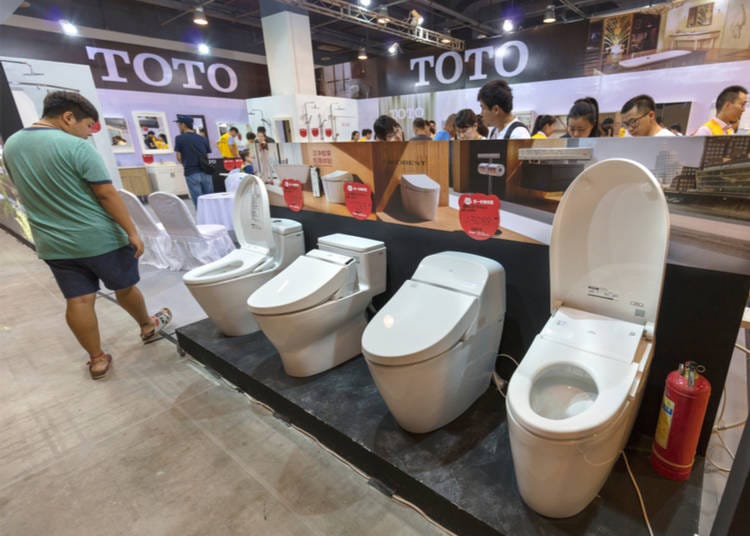
Japanese toilets are at the forefront of technological advancement with a variety of features and gadgets that no other toilets had until the company TOTO introduced its washlet style toilet in 1997. Guiness Book of World Records also recognized the washlet as the most sophisticated toilet in the world. With a list of amazing features, it is no wonder that foreigners who have never used a washlet style toilet leave quite impressed and satisfied.
7. Musical Bidet
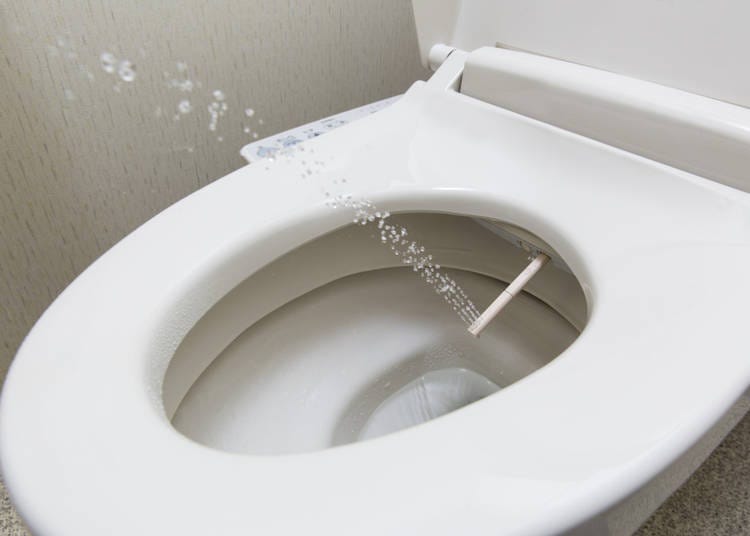
Probably the most popular feature of the washlet is the nozzle that extends and squirts water when the bidet button is activated. “Electric toilets that play the sound of a babbling stream and birdsong whilst a robot arm sprays your bum with warm water. Beats western bogs by miles,” chimed in Simon, 54, a traveller from Belgium. And many others agreed with him. “I’m impressed by the singing toilets that make flushing sounds and wash you,” said Megan, 24 from Canada who came to Japan as an exchange student in university.
The nozzle of the bidet is self-cleaning and also pulsates to ensure an effective wash. There are different pressure levels for those who want a lighter or stronger flow of water making the waste elimination process unique and customizable for each user.
8. Warm Seat

A common issue with toilets in the winter are the seats get cold and are shocking to the bare skin. Japanese toilets have heated seats to ensure sitting on one will be comfortable and warm.
“Seat warmers are great! At first, it was weird but after living in Hokkaido, I love them,” said Lina, 38, an American ALT currently living in Northern Japan.
9. Toilet Music
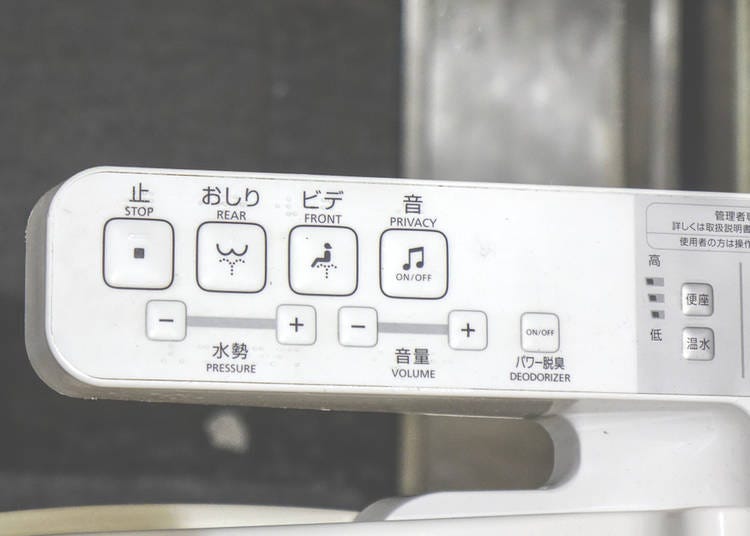
Japanese people, particularly females, are embarrassed by the sounds that accompany relieving yourself so toilet designers created a button when pressed broadcasts either water flushing sounds or music to camouflage the bodily sounds that are emitted. But for some foreigners who rather than using this function to hide their sounds, they are quite entertained by the idea of musical toilets.
Adrianna, 40, from Canada, enjoyed the apparatus. “I like the number of music choices I have to go pee to!”
Many toilets automatically start a flushing sound or water noise when you sit while others have a specific privacy button that needs to be pressed to activate the feature. Depending on the model, toilets emit flushing sounds, birds chirping, ocean waves and even songs.
10. Privacy
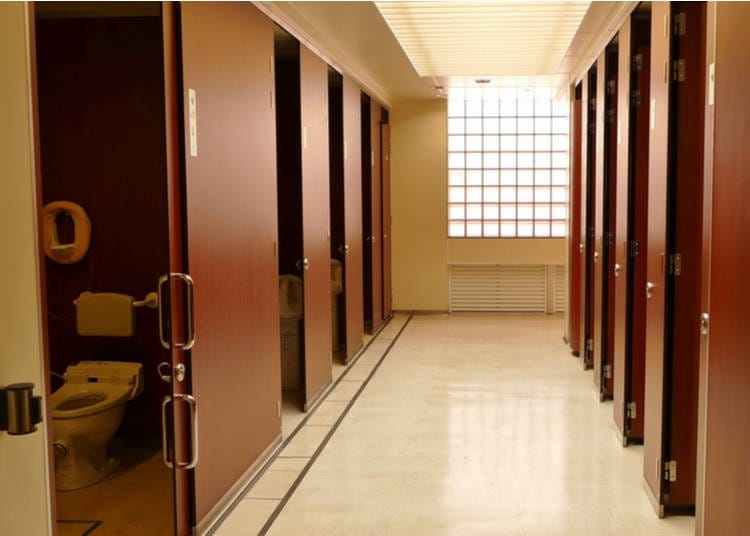
A lot of foreigners from North America were impressed and happy about the level of privacy each stall had to offer. Tyler, 31, from the US really noticed the difference with toilets in Japan compared to back home.
He explained, “I like how long the doors go. And that there aren’t giant cracks where the door meets the hinges. A real sense of privacy that I never got in an American public restroom.”
Carol, 58, a fellow American also agreed. “I love the doors go all the way to the floor and no gaps anywhere.”
11. Deodorizer & Dryer
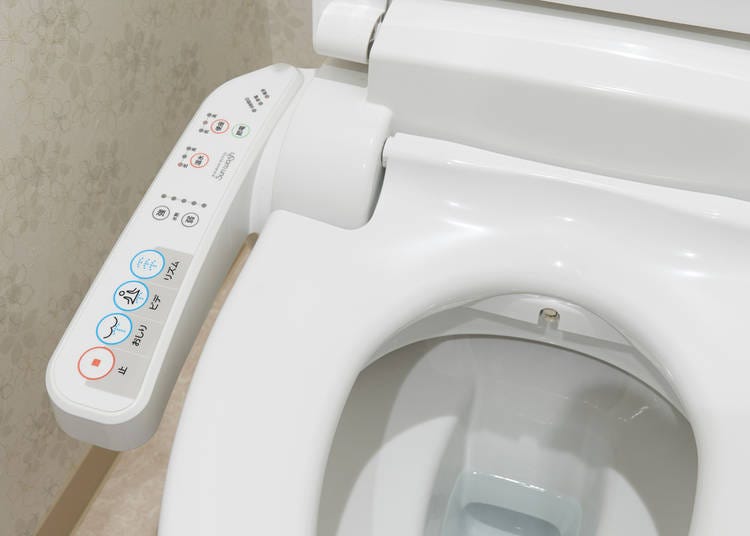
David, 35, a hotel manager from Lake Louise Canada, was fascinated with the washlet toilets. “The high tech toilet with the remote control bidet built in and the perfume gun are incredible.”
To fight the odors that might exude from the toilet before flushing, modern Japanese toilets also have a deodorizer button that releases an air-freshener scent into the toilet bowl. And a built in dryer also creates air flow to waft away bad odors. The dryer is also useful for drying excess water from the skin which also replaces or decreased the need of a lot of toilet paper. Both efficient and eco-friendly, the toilets aim to save water and paper waste.
12. Toilet Tank Sink

Many toilets in Japan have a sink attached to the toilet tank that releases clean water to wash hands. This water then goes into the toilet bowl. An efficient and innovative way to save water. Rather than people having to flush the toilet and wash their hands at a seperate sink, this option lets you wash your hands with fresh water before it enters the toilet bowl.
Xavier, 47, a long time expat American in Japan admired “the efficiency of the bathrooms with sinks built into the top.”
Amanda, 29, a tourist from Seattle, who often visits Japan said, “I was impressed with the privacy of the stalls, the small and big flush modes and the sinks on the tanks. I live in the US and would love to have a toilet with those last two features.”
Marie, 55 from Australia also noticed some interesting things about bathrooms in Japan. “I’d never seen the toilets with the hand washing basin on top. Also, I don’t know if it’s a Japan thing, but the women’s toilets are almost always further away; for example, in shopping malls and cinemas.”
13. Flushing modes
One thing that might be unique to Japanese toilets are the two types of flushing modes they have. Labelled in Kanji as 大 which means big and 小 which means small, users can choose which level of flush they require.
Equivalent to the English differentiation between one and two, 大 is for doing a number two or defecation while 小 refers to a number one or urination.
Carol, 58 from the US admitted, “I have to say though, sometimes I’m confused about which button to flush. Once I learned the kanji it got a whole lot better!”
14. Squatters are still around
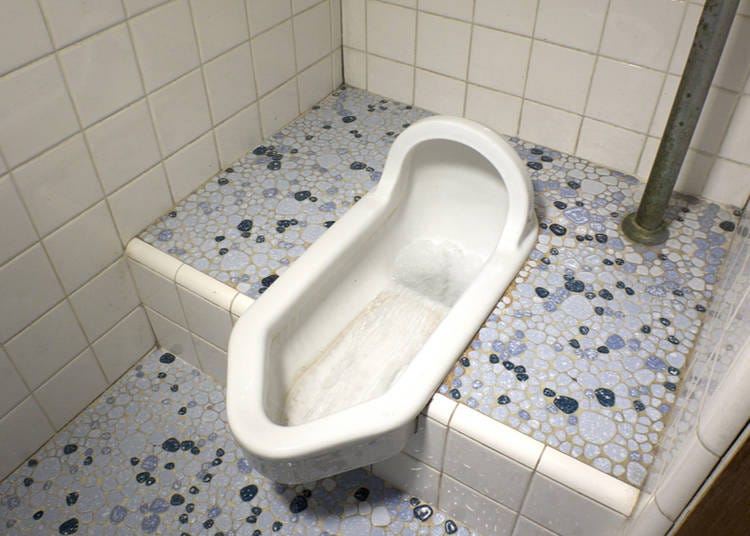
“The old school squat toilets felt out of place.” - Nathan, 61, US
On the opposite end of the spectrum, many foreigners who come to Japan come to realize how technologically modern the country has become while still maintaining its traditional aspects as well. Along with robots at airports and hotels giving directions and advice and automatic doors and vending machines everywhere, sometimes it is a shock when visitors walk into an older Japanese-style bathroom with squat toilets.
“When I first got to Hokkaido my house only had a toilet with an uncovered drop tank like in most port-o-potties,” said Sarah, 34 an American English teacher living in Japan.
The traditional squatter toilets that are built into the floor require squatting rather than sitting to use. These relics are still surprisingly widely used and available in train stations, parks, schools and older buildings. Also, many modern bathrooms usually have one squat style toilet stall along with modern western-style sitting toilets for those who prefer the traditional style toilet.
However, Carol, 58, from the US now prefers squatter toilets to western-style ones. “Squat toilets are awesome since I never sit on public toilet seats anyway because of germs. I really like the public restrooms here!”
15. Going Paperless
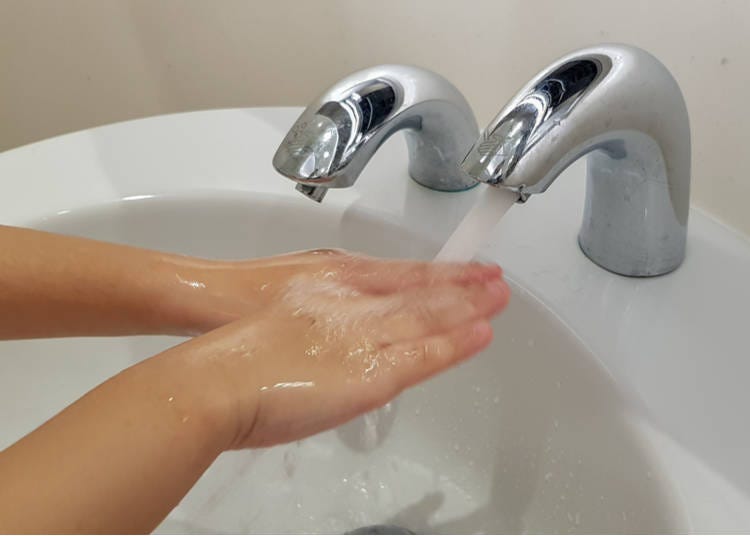
Both traditional and modern Japanese bathrooms might or might not have toilet paper and hand towels for drying after washing hands. If you are in a fancy department store or hotel, you should have a washlet toilet with built-in dryer, toilet paper, automatic hand dryers and paper towels.
But some public bathrooms in older parts of Japan do not provide toilet paper or hand towels. This might be done to save money and reduce paper waste but can be quite shocking to visitors who have already begun eliminating wastes before they realize there is no toilet paper available.
Katie, 23 from California was quite surprised when she was in a Japanese bathroom. “No soap in like half of the bathrooms. No towels or drying systems either. I learned quickly to carry a small hand towel,” she added.
Most Japanese people carry tissue packets to use as toilet paper and hand towels or handkerchiefs for drying hands after washing. So it might be a good idea to have tissue and towels with you just in case.
16. Emergency Button

“The emergency button was nice but made me ask what constitutes an emergency,” asked David, 35, from Canada, when noticing it when he visited a Japanese bathroom.
One thing that confuses foreigners is the extra button that sometimes gets mistaken for a flush button. Many public bathrooms have an emergency button that can be pressed or pulled in emergency situations. Sometimes pushing it sends out a large alarm while other times it sends a signal to security or staff to check on the stall.
I have accidentally pushed it thinking it was the flush button. A loud beeping sound persisted and I didn’t know how to switch it off. So I quickly finished and ran away.
The button is quite useful, especially in a country where the aging population is increasing. Whether it be used for health reasons or safety reasons, having a quick and convenient way to call for help is definitely a feature of the Japanese toilet that most people can appreciate.
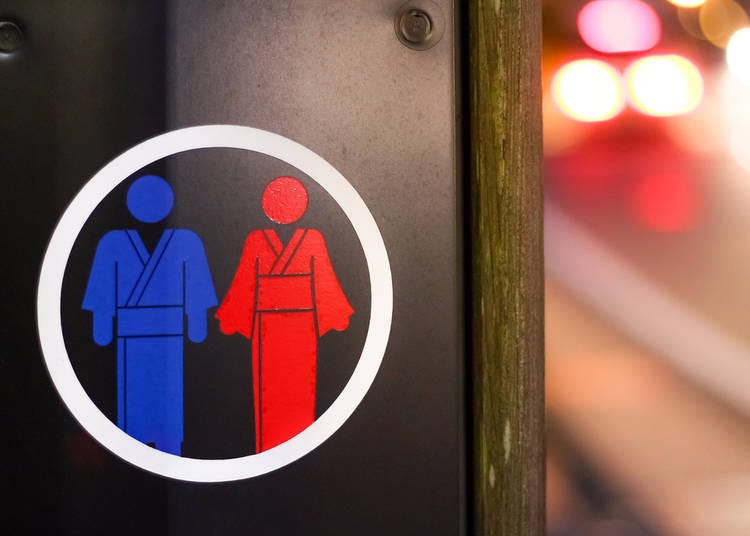
Out and about in Japan, when nature calls it is good to know that you will have a bathroom that will most likely be clean, in good working condition and convenient. You will find many cutting edge technological devices and features that will add an even more interesting experience to an already adventurous trip to Japan. Make sure to experience all that Japan has to offer both culturally and technologically. Also make sure to snap a picture of the modern toilet to show your friends back home.
Related Articles
Sohail Oz Ali is a Canadian Youtuber, author and blogger who has lived in Hokkaido, Nagoya and now resides in Chiba. Between visits to Karaoke and revolving sushi restaurants, he enjoys walking his dog, watching Japanese love dramas and teaching English. You can also find him roaming the streets of Japan looking for the next big YouTube video trends.
- Area
*Prices and options mentioned are subject to change.
*Unless stated otherwise, all prices include tax.
Popular Tours & Activitiess
Recommended places for you
-

Enjoy Japan's Gorgeous Winter Lights! Ride the Romancecar to Shonan no Hoseki Illumination
by: Guest Contributor
-

Tokyo City Pass Upgrade: Harry Potter Studio Tour & Top Sights up to 85% Off
by: Guest Contributor
-

How to Get Don Quijote's Exclusive 2025-2026 Winter Gift (+Tax-Free Savings)
-

A Travel Game Changer! Go Hands-Free Between Tokyo and Kyoto with LUGGAGE EXPRESS by JTB and JR Tokai
by: Guest Contributor
-

Keisei × Keikyu 16-Temple Goshuin Tour: Discover Deeper Tokyo & Yokohama
by: Guest Contributor
-

[Extended Offer!](12% OFF KKday Coupon) Mt. Fuji Autumn Leaves, Powder Snow & More! 15 Best Tours to Experience Japan in Fall & Winter
Inspiration for Accommodations
-

Enjoy Mt. Fuji from the Comfort of Your Room! Recommended Ryokan with Mt. Fuji View
-

Stay Near the Cherry Blossoms! Hotels for Cherry Blossom Viewing in Tokyo
-

Family-Friendly Hotels with Free Shuttle to Disneyland: Convenient Access for a Magical Stay
-

Top Ranked Hakone Hotels with Mt. Fuji View: Enjoy Stunning Scenery from Your Private Space
-

Convenient Tokyo Hotels with Airport Shuttle: Ideal for Families and Heavy Luggage
-

Stunning Tokyo Tower View Hotels: Enjoy Spectacular Scenery from Your Private Space
-

Convenient Asakusa Hotels with Kitchens: Ideal for Extended Family Visits
-

Experience Luxury: Hakone's 10 Best Five-Star Accommodations
-

Enjoy Mt. Fuji Autumn Leaves! Top Hotels Near the Popular Autumn Leaves Corridor
-

Experience Hakone Fall Foliage from Your Room with Stunning Views
-

Spending Wonderful Time Alone in Shibuya - Free Cosmetics and a Hundred-Yen Bus!
-

Complete Guide to Buying Japanese Medicine in Japan: Phrases and Vocabulary You Need to Know
-

Asakusa’s Feathery Jungle Forest: Owl no Mori
by: Holly Neslusan
-

Exploring Tokyo Station: 11 Must-Visit Spots Around the Heart of Tokyo
-

Okonomiyaki, Monjayaki and Takoyaki
-
Ad

Why Shinjuku Station Is A Perfect Shopping Destination: All Your Travel Needs Can Be Bought Without Leaving the Station!
- #best ramen tokyo
- #what to buy in ameyoko
- #what to bring to japan
- #new years in tokyo
- #best izakaya shinjuku
- #things to do tokyo
- #japanese nail trends
- #what to do in odaiba
- #onsen tattoo friendly tokyo
- #daiso
- #best sushi ginza
- #japanese convenience store snacks
- #best yakiniku shibuya
- #japanese fashion culture
- #best japanese soft drinks



















